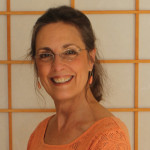As of late, some controversy has arisen between acupuncturists and physical therapists (PTs) as PTs have been expanding their scope of practice to include acupuncture, or “dry needling”. This isn’t a vanity argument — acupuncturists aren’t “jealous” about sharing their craft. We do want to protect our profession and our reputations. The issue revolves around the training that physical therapists receive and the way many in the industry have been trying to redefine what dry needling entails.
Let’s set the record straight: dry needling is acupuncture; saying otherwise is false.
The assertion that dry needling isn’t acupuncture because meridians and acupuncture points aren’t involved is misleading. As trained acupuncturists, we employ trigger point needling (dry needling) as part of an acupuncture treatment, usually for the purpose of releasing constricted muscle fibers that cause pain.
 This technique consists of inserting needles into sore, tender or tight muscles with the objective of providing pain relief by causing fasciculation of constricted muscle fibers. Insertion points sometimes coincide with known acupuncture points, but often are motor points, where the muscle is most easily excited. Regardless — needles are being inserted into the body. That’s an invasive procedure and as such requires additional training.
This technique consists of inserting needles into sore, tender or tight muscles with the objective of providing pain relief by causing fasciculation of constricted muscle fibers. Insertion points sometimes coincide with known acupuncture points, but often are motor points, where the muscle is most easily excited. Regardless — needles are being inserted into the body. That’s an invasive procedure and as such requires additional training.
State certified acupuncturists go through a full time, three to four-year Masters program that consist of a minimum of 3,000 hours of study, 660 clinical hours and 350 patient visits. One of the key aspects of acupuncture training is learning where and how — and where and how not — to insert needles.
Conversely, PTs that assert they have received training in dry needling techniques have usually completed no more than a 27-hour weekend certification course. Read one licensed Texas acupuncturist’s experience with a “dry needling certification” course in her area.
New York State (along with California, Florida, Idaho, Hawaii, Utah, Washington) has banned dry needling from the scope of what physical therapists may offer, in part because there are real risks involved with the use of acupuncture needles by physical therapists. Some of these risks include pneumothorax, blood vessel, nerve and organ injury, or infection due to not following clean needle protocols.
If you are suffering from an acute muscle injury or chronic repetitive injury, please try trigger point therapy. It’s a quick way to safely address many types of pain.

